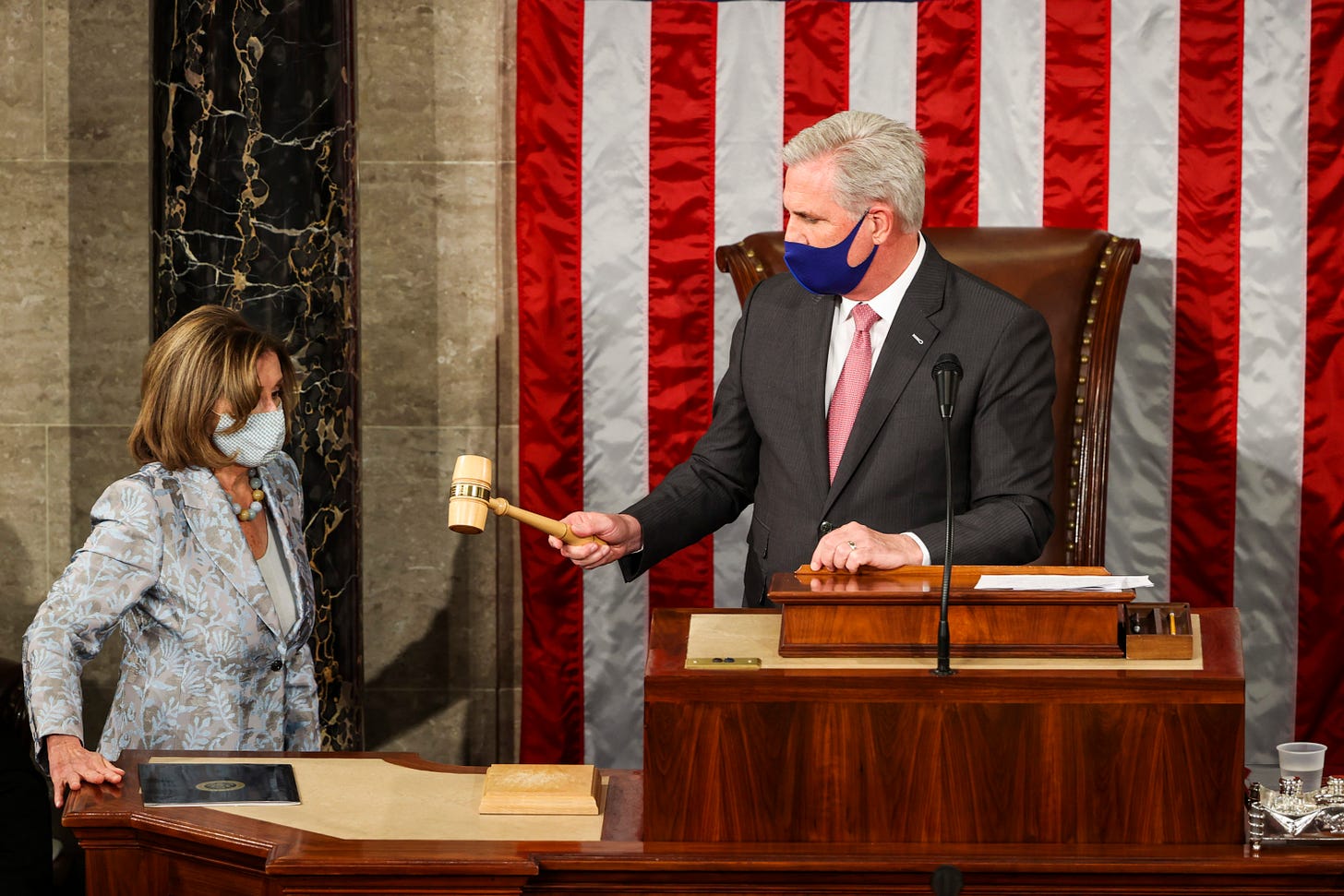
Scott Rasmussen—the real Scott Rasmussen, whom you can follow here, not the people who run his old firm, Rasmussen Reports—has a new poll. On the generic ballot, 41 percent of registered voters say they’d vote for the Democrat from their congressional district in 2022, while 40 percent say they’d vote for the Republican. That’s closer than last month, when Rasmussen’s poll showed Democrats with a four-point advantage, 43 percent to 39 percent.
It’s awfully early, of course. But this poll is consistent with private polling I’ve seen. And if the 2020 national popular vote did end up only +1 Democratic, then Republicans would almost surely take the House. Add in the long history of what happens in first-term off-year elections, and the likely effects of redistricting this year, and the odds of a Republican House in 2023 seem better than 50-50.
What happened to shrink a four-point Democratic lead last month to one point? Republicans have been coming home. Last month Rasmussen had only 85 percent of GOP voters saying they would vote for the Republican from their district. Now he’s seeing 91 percent of Republicans saying they’ll vote with their party. This number matches Democrats’ support for their party’s candidate.
Which is striking.
The Biden administration has, after all, done well on its key first task: fighting COVID. There have been no big Biden scandals or glaring and major mistakes. The economy is not perfect—jobs numbers were weaker than expected and inflation higher—but overall it is trending toward growth. Fiscal conservatives are very dubious about the liberal big government proposals, but polling actually suggests—or seems to suggest—that the specific liberal big-government proposals are pretty popular.
So ask yourself: Why would the Biden administration be more popular 18 months from now than it is today?
Democrats in the House haven’t done too much to offend anyone, either, so far. But since they have to help Biden govern, they’ll have to make some tough decisions in the year ahead. Democratic divisions may become more obvious. Some constituencies may have to make do with half a loaf. Others might not get anything much they wanted. So again: It’s hard to see why there would be higher approval of the Democratic House by Election Day 2022.
But, you say: “You’re forgetting something. The dysfunctional and disreputable Republicans will save the Democrats!”
Perhaps.
But so far they’re not. The striking findings in the Rasmussen poll are about Republicans. Now it’s true that this latest poll was in the field May 6-8, so it doesn’t capture any possible fallout from the purge of Liz Cheney from leadership. But there’s been plenty of publicity over the last few months about Marjorie Taylor Greene and Matt Gaetz—about the wacky recounts in Arizona and Trump’s continued embrace of the Big Lie.
But none of this seems to be hurting GOP prospects in 2022.
So it’s worth coming to grips with the fact that the contemptible, even dangerous behavior by the overwhelming majority of House Republicans does not automatically mean that they will be punished politically. (And by the way, Democrats holding the Senate in 2022 is no sure thing either.)
The arc of off-year elections is short, and it may not bend toward justice.
What is to be done to bend this arc?
That’s a big question.
But the beginning of wisdom is to recognize the situation, to overcome complacency and resist wishful thinking. The beginning of wisdom, as Tocqueville put it, is to “have that salutary fear of the future that makes one watchful and combative, and not that sort of soft and idle terror that wears hearts down and enervates them.”










